Posted on May 1st, 2011 by Mary Lord
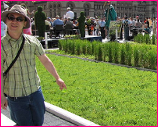 This lesson for grades 6-8 explores how civil engineering has solved the challenge of moving water via irrigation. Students learn how irrigation systems direct water for use in farming or other purposes. Using everyday items, each team of students designs and builds an “irrigation system” capable of moving two cups of water at least three feet and distributing it evenly in two separate containers.
This lesson for grades 6-8 explores how civil engineering has solved the challenge of moving water via irrigation. Students learn how irrigation systems direct water for use in farming or other purposes. Using everyday items, each team of students designs and builds an “irrigation system” capable of moving two cups of water at least three feet and distributing it evenly in two separate containers.
Read More
Filed under: Grades 6-8, Lesson Plans | 1 Comment »
Tags: Class Activities, Environmental Engineering, Environmental science, Grades 6-8, Green, Lesson Plan
Posted on March 28th, 2011 by Jaimie Schock
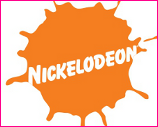 The children’s programming TV network Nickelodeon is offering to feature camera footage of events with groups performing “green activities” that promote a healthy Earth environment. Submitted footage may be featured on the network or on their website.
The children’s programming TV network Nickelodeon is offering to feature camera footage of events with groups performing “green activities” that promote a healthy Earth environment. Submitted footage may be featured on the network or on their website.
Read More
Filed under: Web Resources | Comments Off on Nickelodeon: Earth Day Events Promotion
Tags: Environmental Engineering, Environmental science, Events, Green, Outreach, Television, Video contest
Posted on January 23rd, 2011 by ASEE
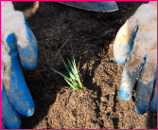 For a former New York public school teacher and six young African-American men, a wrecked grocery store in New Orleans’ Lower Ninth Ward has become a place of second chances. Nat Turner, a former history teacher, is the founder of Our School at Blair Grocery, a fledgling educational venture and commercial urban farm. The enterprise is an unusual hybrid of G.E.D. training and a farm academy.
For a former New York public school teacher and six young African-American men, a wrecked grocery store in New Orleans’ Lower Ninth Ward has become a place of second chances. Nat Turner, a former history teacher, is the founder of Our School at Blair Grocery, a fledgling educational venture and commercial urban farm. The enterprise is an unusual hybrid of G.E.D. training and a farm academy.
Read More
Filed under: K-12 Education News | Comments Off on Amid New Orleans Blight, an Unusual School Puts Down Roots
Tags: Agricultural, Community Awareness, Community Service, Gardening, Green, Minority Group Students
Posted on January 17th, 2011 by ASEE
 In this lesson, students in grades 3 through 8 assume the role of building engineers, testing several materials to determine which would provide the best house insulation. They learn about the role of insulation in preventing heat transfer and discuss the importance of energy conservation in buildings.
In this lesson, students in grades 3 through 8 assume the role of building engineers, testing several materials to determine which would provide the best house insulation. They learn about the role of insulation in preventing heat transfer and discuss the importance of energy conservation in buildings.
Read More
Filed under: Class Activities, Grades 6-8, Grades 6-8, Grades K-5, Grades K-5, Lesson Plans | Comments Off on Lesson: Winter Insulation
Tags: Architectural, Class Activities, Environmental Engineering, Grades 3-8, Grades K-5, Green, Green Technology
Posted on January 17th, 2011 by ASEE
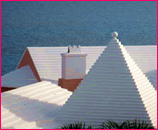 One way both to save energy and curb climate change is to make surfaces – roofs, even streets – a light color. Solar radiation would be reflected into space rather than absorbed by buildings and pavement. Less air conditioning would be needed. If this were done uniformly, says Energy Secretary Steven Chu, the results could be huge – “the equivalent of reducing the carbon emissions due to all the cars on the road for 11 years.”
One way both to save energy and curb climate change is to make surfaces – roofs, even streets – a light color. Solar radiation would be reflected into space rather than absorbed by buildings and pavement. Less air conditioning would be needed. If this were done uniformly, says Energy Secretary Steven Chu, the results could be huge – “the equivalent of reducing the carbon emissions due to all the cars on the road for 11 years.”
Read More
Filed under: Special Features | Comments Off on To Go Green, Think White
Tags: Green, Green Technology, Innovation
Posted on January 11th, 2011 by Jaimie Schock
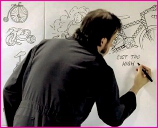 The Sustainability Workshop video series from Autodesk, an eGFI sponsor, uses animated drawings and real-world examples in short films that explain essential concepts for budding engineers. Some topics include engineering systems, green design, turning an idea into a finished product, and even why modern bicycles look so different from those built 200 years ago.
The Sustainability Workshop video series from Autodesk, an eGFI sponsor, uses animated drawings and real-world examples in short films that explain essential concepts for budding engineers. Some topics include engineering systems, green design, turning an idea into a finished product, and even why modern bicycles look so different from those built 200 years ago.
Read More
Filed under: Web Resources | Comments Off on Website: Sustainability Workshop from Autodesk
Tags: Architectural, Corporations, Design, Engineering Design, Engineering Design Process, Environmental Engineering, Green, Green Technology, Software, Sustainability, Videos, Web Resources
Posted on June 21st, 2010 by Jaimie Schock
 The American Chemical Society offers a number of resources for teachers interested in teaching environmentally friendly chemistry. Their website features books, online tools and networks, activities and experiments ranked by study level, and an index of colleges with green chemistry programs.
The American Chemical Society offers a number of resources for teachers interested in teaching environmentally friendly chemistry. Their website features books, online tools and networks, activities and experiments ranked by study level, and an index of colleges with green chemistry programs.
Read More
Filed under: Web Resources | Comments Off on Resource: Green Chemistry from the American Chemical Society
Tags: American Chemical Society, Chemical Engineering, Chemistry, Class Activities, Green, Internet Resources, Web Resources
Posted on May 3rd, 2010 by ASEE
 Student at Dallas’s independent Lakehill Preparatory School are enjoying their new $2.2 million Family Environmental Center, the Dallas Morning News reports. The idea for the center came from headmaster Roger Perry after he took noticed a swath of vacant land next to the school’s ball fields. The result is an impressive LEED standards complex that houses three science labs, a large meeting hall, and a retention pond.
Student at Dallas’s independent Lakehill Preparatory School are enjoying their new $2.2 million Family Environmental Center, the Dallas Morning News reports. The idea for the center came from headmaster Roger Perry after he took noticed a swath of vacant land next to the school’s ball fields. The result is an impressive LEED standards complex that houses three science labs, a large meeting hall, and a retention pond.
Read More
Filed under: K-12 Education News | Comments Off on An Empty Lot Sprouts Green
Tags: Environmental science, Green
Posted on April 19th, 2010 by Jaimie Schock
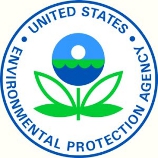 This comprehensive website, run by the Environmental Protection Agency, provides lists of Superfund sites organized by state. A Superfund site is an uncontrolled or abandoned place where hazardous waste is located, possibly affecting local ecosystems or people. Important documents, contacts, timelines, and historical information are available for each location.
This comprehensive website, run by the Environmental Protection Agency, provides lists of Superfund sites organized by state. A Superfund site is an uncontrolled or abandoned place where hazardous waste is located, possibly affecting local ecosystems or people. Important documents, contacts, timelines, and historical information are available for each location.
Read More
Filed under: Web Resources | 1 Comment »
Tags: Environmental Engineering, Environmental Protection Agency, Green, Internet Resources, Superfund, Waste management, Web Resources
 This lesson for grades 6-8 explores how civil engineering has solved the challenge of moving water via irrigation. Students learn how irrigation systems direct water for use in farming or other purposes. Using everyday items, each team of students designs and builds an “irrigation system” capable of moving two cups of water at least three feet and distributing it evenly in two separate containers.
This lesson for grades 6-8 explores how civil engineering has solved the challenge of moving water via irrigation. Students learn how irrigation systems direct water for use in farming or other purposes. Using everyday items, each team of students designs and builds an “irrigation system” capable of moving two cups of water at least three feet and distributing it evenly in two separate containers.








 The children’s programming TV network Nickelodeon is offering to feature camera footage of events with groups performing “green activities” that promote a healthy Earth environment. Submitted footage may be featured on the network or on their website.
The children’s programming TV network Nickelodeon is offering to feature camera footage of events with groups performing “green activities” that promote a healthy Earth environment. Submitted footage may be featured on the network or on their website. For a former New York public school teacher and six young African-American men, a wrecked grocery store in New Orleans’ Lower Ninth Ward has become a place of second chances. Nat Turner, a former history teacher, is the founder of Our School at Blair Grocery, a fledgling educational venture and commercial urban farm. The enterprise is an unusual hybrid of G.E.D. training and a farm academy.
For a former New York public school teacher and six young African-American men, a wrecked grocery store in New Orleans’ Lower Ninth Ward has become a place of second chances. Nat Turner, a former history teacher, is the founder of Our School at Blair Grocery, a fledgling educational venture and commercial urban farm. The enterprise is an unusual hybrid of G.E.D. training and a farm academy. In this lesson, students in grades 3 through 8 assume the role of building engineers, testing several materials to determine which would provide the best house insulation. They learn about the role of insulation in preventing heat transfer and discuss the importance of energy conservation in buildings.
In this lesson, students in grades 3 through 8 assume the role of building engineers, testing several materials to determine which would provide the best house insulation. They learn about the role of insulation in preventing heat transfer and discuss the importance of energy conservation in buildings. One way both to save energy and curb climate change is to make surfaces – roofs, even streets – a light color. Solar radiation would be reflected into space rather than absorbed by buildings and pavement. Less air conditioning would be needed. If this were done uniformly, says Energy Secretary Steven Chu, the results could be huge – “the equivalent of reducing the carbon emissions due to all the cars on the road for 11 years.”
One way both to save energy and curb climate change is to make surfaces – roofs, even streets – a light color. Solar radiation would be reflected into space rather than absorbed by buildings and pavement. Less air conditioning would be needed. If this were done uniformly, says Energy Secretary Steven Chu, the results could be huge – “the equivalent of reducing the carbon emissions due to all the cars on the road for 11 years.” The Sustainability Workshop video series from Autodesk, an eGFI sponsor, uses animated drawings and real-world examples in short films that explain essential concepts for budding engineers. Some topics include engineering systems, green design, turning an idea into a finished product, and even why modern bicycles look so different from those built 200 years ago.
The Sustainability Workshop video series from Autodesk, an eGFI sponsor, uses animated drawings and real-world examples in short films that explain essential concepts for budding engineers. Some topics include engineering systems, green design, turning an idea into a finished product, and even why modern bicycles look so different from those built 200 years ago. The
The  Student at Dallas’s independent Lakehill Preparatory School are enjoying their new $2.2 million Family Environmental Center, the Dallas Morning News reports. The idea for the center came from headmaster Roger Perry after he took noticed a swath of vacant land next to the school’s ball fields. The result is an impressive LEED standards complex that houses three science labs, a large meeting hall, and a retention pond.
Student at Dallas’s independent Lakehill Preparatory School are enjoying their new $2.2 million Family Environmental Center, the Dallas Morning News reports. The idea for the center came from headmaster Roger Perry after he took noticed a swath of vacant land next to the school’s ball fields. The result is an impressive LEED standards complex that houses three science labs, a large meeting hall, and a retention pond.  This
This